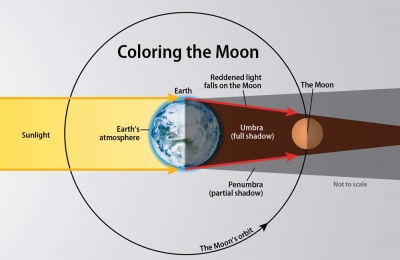
When the Moon passes between Sun and Earth, the lunar shadow is seen as a solar eclipse on Earth. When Earth passes directly between Sun and Moon, its shadow creates a lunar eclipse. Lunar eclipses can happen only when the Moon is opposite the Sun in the sky, a monthly occurrence we know as a full Moon. Lunar eclipses can happen only when the Moon is opposite the Sun in the sky, a monthly occurrence we know as a full Moon. But lunar eclipses do not occur every month because the Moon’s orbit is tilted five degrees from Earth’s orbit around the Sun, so most of the time the Moon passes above or below the shadow. Without the tilt, lunar eclipses would occur every month.
Lunar and solar eclipses occur with about equal frequency. Lunar eclipses are more widely visible because Earth casts a much larger shadow on the Moon during a lunar eclipse than the Moon casts on Earth during a solar eclipse. As a result, you are more likely to see a lunar eclipse than a solar eclipse.
Credit : Stardate
Picture Credit : Google




